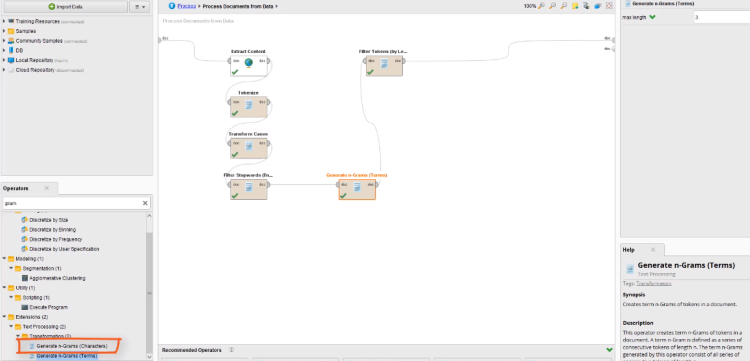

Machine learning algorithms use computational techniques to “learn” information directly from data without relying on a predetermined equation as a model.

Machine learning operates on the basis of algorithms that enable computers to find patterns in data and them turn them into optimal behavior. Deep learning is a specific method for machine learning – not an entire field of its own.
RAPIDMINER STUDIO ASSOCIATION HOW TO
With ML, however, the focus is on teaching the computer to learn for itself how to complete a task.Īnother term we hear mistakenly interchanged with machine learning and artificial intelligence is deep learning. If you create a set of simple rules that never allow a computer to lose at rock-paper-scissors, then you’ve created some basic AI.Īs we’ve established above, machine learning is a subset of artificial intelligence. It is one of the approaches used to achieve AI. It refers to any set of approaches or techniques, ranging from the pretty simple to the incredibly complex, that is employed to get a computer to mimic human behavior. They are not the same and the differences truly matter.Īrtificial intelligence (AI) is the simulation of human intelligence in computers. It’s important to avoid the misconception that machine learning and artificial intelligence are the same. But, if that’s the case, what else is a part of this field? AI, machine learning and deep learning have specific relationships with each other and work together. Machine Learning and Artificial Intelligenceįirst and foremost, machine learning and artificial intelligence are not the same thing. Machine learning is only a subset of artificial intelligence. The implications of this progress are huge, but in order to fully appreciate them, you need to understand more about how machine learning works. It’s also used to populate Amazon and Netflix recommendations. In the financial services sector, machine learning is being used to analyze data for the purpose of risk analytics, fraud detection, and portfolio management. Machine learning is already making a substantial difference in several industries. This provides truly superhuman insight into the huge mass of data being generated today, driving a revolution in nearly every sector of business. Machine learning lets us teach a computer to look at the same data that we’re looking at, and to then derive patterns and connections that we can’t see.

There’s a lot we might want to know about our business, but the patterns we need are hidden in dense data. Humans may be smart, but we often just can’t see well enough. If, for example, the world changed, leading to a change in the data that you were analyzing, the model wouldn’t know what to do with it. However, it couldn’t handle data outside the rules provided to it. In many cases, this would lead to the computer being correct. But modern machine learning represents a paradigm shift in how computing and statistical analysis was done in the past, where the emphasis was on rule-based decision making: give the computer a set of rules and deterministically have it make decisions. Relatively simple forms of machine learning like linear regression algorithms have existed for 200 years. This progress is made possible, in large part, from machine learning. The Evolution of Machine LearningĪlthough artificial intelligence is nothing new (the famous Turing Test was developed in 1950, and AI was established as field of research in 1956), it’s grown to include common and impactful applications in both business and everyday life. Today, it can be used in nearly any field or industry to consume massive amounts of data from unlimited sources and drive real business impact.

Although some forms of machine learning have arguably been around for hundreds of years, it’s now front and center in the world of technological innovation. In 2016, for the first time ever, a machine beat the world’s best “Go” player because of machine learning. A computer can be taught the rules of the game in such a way that it can adapt and respond to a limitless number of moves, including those it has never encountered. This type of learning can be used to help computers recognize patterns and associations in massive amounts of data, and make predictions and forecasts based on its findings.Ī good example is teaching a computer to play a game of Go. Machine learning is a subset of artificial intelligence (AI) that deals with the extracting of patterns from data, and then uses those patterns to enable algorithms to improve themselves with experience.


 0 kommentar(er)
0 kommentar(er)
